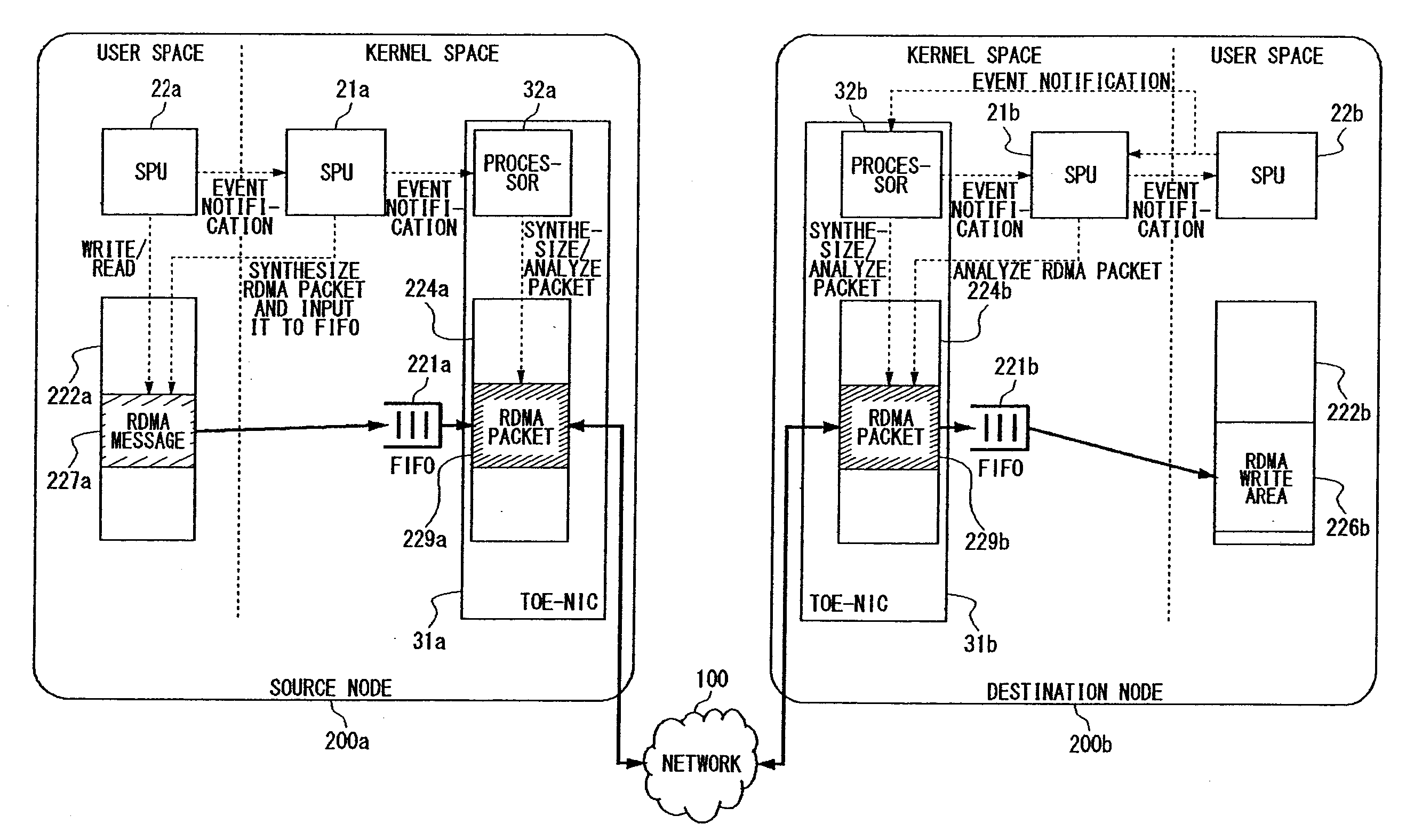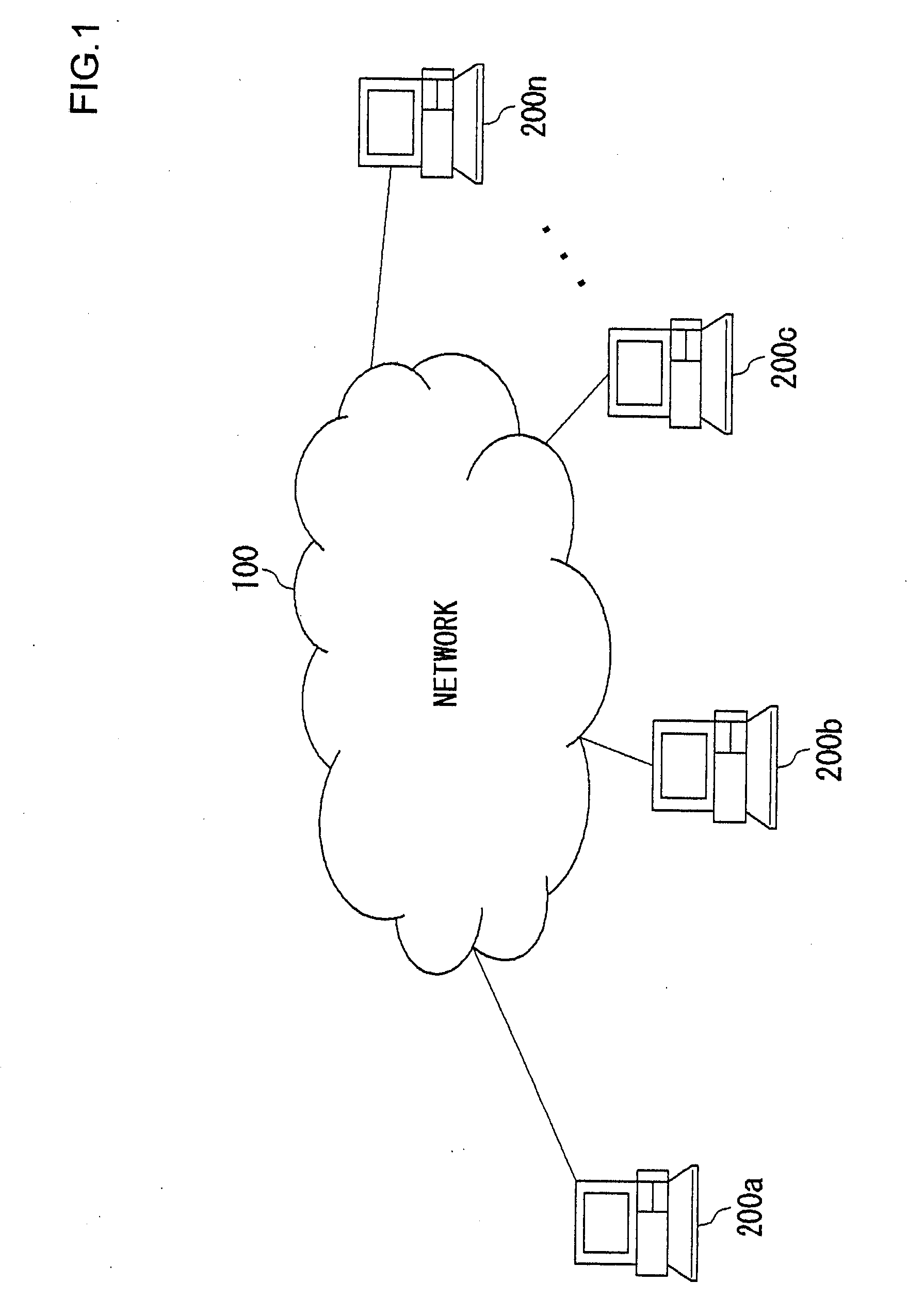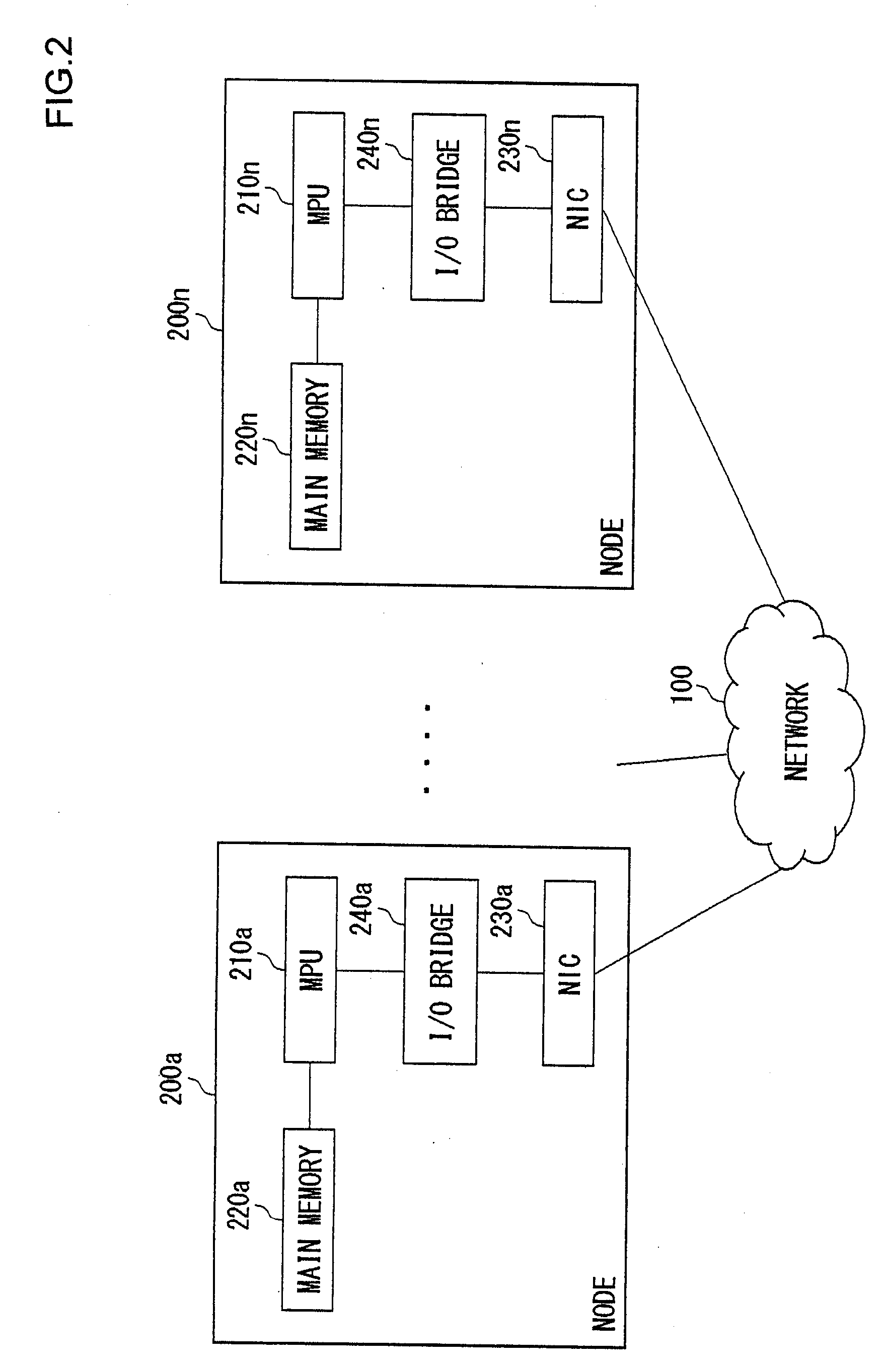Network Processor System and Network Protocol Processing Method
a network processor and network protocol technology, applied in the field of network processor systems and network protocol processing methods, can solve the problems of difficult processing of microprocessors, bottlenecks in network bandwidth, and inability to improve the processing performance of microprocessors that process packets transmitted through the network
- Summary
- Abstract
- Description
- Claims
- Application Information
AI Technical Summary
Benefits of technology
Problems solved by technology
Method used
Image
Examples
first embodiment
[0042]FIG. 1 shows a network system according to an embodiment of the present invention. A plurality of nodes 200a, 200b, 200c, . . . , and 200n are connected to a network 100. The nodes connected to the network 100 are hereinafter collectively or individually referred to as a node 200. The network 100 includes a router that transfers packets according to Internet Protocol (IP).
[0043]FIG. 2 is a block diagram of the node 200 of FIG. 1. Each node 200 includes a micro processing unit (MPU) 210, a main memory 220, an I / O bridge 240, and a network interface card (NIC) 230.
[0044]The MPU 210 generates a packet in which a header information such as a destination address is added to data to be transmitted stored in the main memory 220. The MPU 210 passes the packet thus generated to a buffer in the NIC 230 through the I / O bridge 240. The NIC 230 sends out the packets stored in the buffer to the network 100.
[0045]The NIC 230 stores a packet received from the network 100 in the buffer and the...
first embodiment example
[0059]FIG. 4 is a block diagram of the node 200 according to the first embodiment example. In the first embodiment example, the node 200 is equipped with a normal TOE-less NIC 30 and the NIC 30 is enabled to operate by the configuration on startup of the system. Here, the structure related to the TOE-NIC 31 that does not operate is not shown in the figure. In the first embodiment example, the TCP / IP protocol stack is implemented on the PU 10 or the SPU 20. The TCP / IP protocol stacks 10s, 20s respectively implemented on the PU 10 and the SPU 20 can operate simultaneously or either of these stacks may pause.
[0060]As an example of RDMA operations, a RDMA write is now explained. Assumes that a RDMA write is executed between the two nodes 200a and 200b of FIG. 1. The source node 200a issues a RDMA write command to the destination node 200b so as to transmit data to be RDMA written to the destination node 200b.
[0061]FIG. 5 is a sequence diagram of a RDMA write process executed between th...
second embodiment example
[0094]FIG. 8 is a block diagram of the node 200 according to the second embodiment example. In the first embodiment example, the case has been explained in which the node 200 is equipped with the normal NIC 30 with no TOE function. In the second embodiment example, the case will be explained in which the node 200 is equipped with the TOE-NIC 21 having a TOE function. Since the configuration on startup of the system enables the TOE-NIC 21 to operate, any structure related to the NIC 30 that does not operate is not shown in the figure. Since a TCP / IP protocol stack is implemented in the TOE-NIC 31, the TCP / IP protocol processing can be performed inside the TOE-NIC 31.
[0095]In the second embodiment example, the operation will be described for the case in which a RDMA write is executed between the source node 200a and the destination node 200b as in the first embodiment example. The sequence of the RDMA write process between the source node 200a and the destination node 200b is the same...
PUM
 Login to View More
Login to View More Abstract
Description
Claims
Application Information
 Login to View More
Login to View More - R&D
- Intellectual Property
- Life Sciences
- Materials
- Tech Scout
- Unparalleled Data Quality
- Higher Quality Content
- 60% Fewer Hallucinations
Browse by: Latest US Patents, China's latest patents, Technical Efficacy Thesaurus, Application Domain, Technology Topic, Popular Technical Reports.
© 2025 PatSnap. All rights reserved.Legal|Privacy policy|Modern Slavery Act Transparency Statement|Sitemap|About US| Contact US: help@patsnap.com



